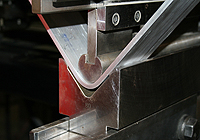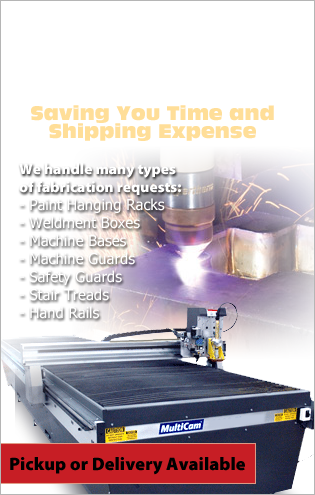|
CORE
SERVICES > PRESS BRAKE FORMING
Press
Brake Forming
-
 A press brake, also known as a brake press or
just brake, is a machine tool for bending sheet
and plate material, most commonly sheet metal. A press brake, also known as a brake press or
just brake, is a machine tool for bending sheet
and plate material, most commonly sheet metal.
-
Brake forming is one of the oldest mechanical
metal deformation process. During the process, a
piece of sheet metal is formed along a straight
axis. This may be accomplished by a "V"- shaped,
"U"-shaped, or channel-shaped punch and die set.
-
Although press braking appears a simple concept,
maintaining accuracy can often be quite
difficult. Precision bending is a function of
both the press, the tooling, and the work-piece
material. Material properties such as yield
strength, ductility, hardness, and the condition
of the material, all affect the amount of spring
back of the material.
-
The most common industrial press braking process
is called air bending. Air bending relies upon
three point bending. The angle of the bend is
dictated by how far the punch tip penetrates the
"V" cavity. The greater the penetration of the
punch tip the greater the angle achieved.
-
The main benefit of air bending is that it uses
much less force than other methods to achieve a
90° bend due to the leverage effect.
-
Characteristics of the metal brake forming
process include:
-
Its ability to form ductile materials,
-
Its use in both low and medium production run
applications,
-
The need for minimal tooling,
-
Its suitability to produce smaller parts,
-
Its output of long workpieces using a "V", "U",
channel, or other special punch and dies.
-
Press braking is a metal forming process that
uses an open-frame single-action press used to
bend, blank, corrugate, curl, notch, perforate,
pierce, or punch sheet metal or plate.
|
 |
